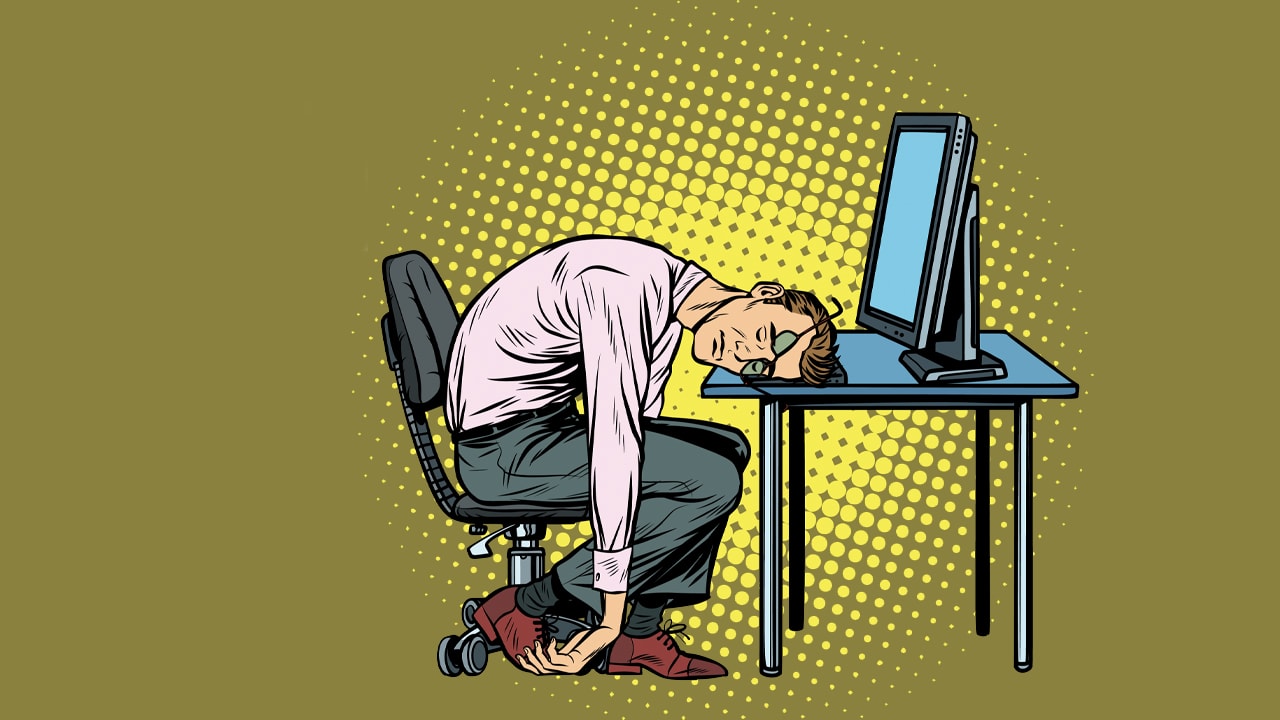Fighting fatigue on the digital front

When it was learned that remote working was here to stay, most of us were glad. The opportunity to work from home was a welcome change given the circumstances. But while the initial days of remote working were a blessing, a familiar problem began to rear its head.
With professional and personal lines being blurred, employees working from home started spending up to 30% more time at work while being less productive overall. This has led to a serious case of digital overload felt by many employees. While the concept of digital overload itself is not new or unique to the pandemic, this issue has been exacerbated by the onset of compulsory WFH.
Spending more time at work is directly proportional to increased time in front of a screen. And while it’s safe to say being online is imperative while working from home, many of us don’t get that break from the screen even when we aren’t online or working. Because of how connected we are to one another at all times and how attached we are to one another; this pandemic has only increased our dependence on our phones and computers to even fulfill our social needs.
Microsoft, in its first annual Work Trends Index revealed that usage of Microsoft Teams for weekly meetings had increased by 148% in 2020/21 as opposed to the year prior.
So how can employers help employees combat this digital overload? What can employees do within their home-work spaces to reduce the stress? Here are some tips:
Switch off the video
Gianpiero Petriglieri, in an interview with BBC Worklife explained that being present on video calls can be draining on people as it forces them to work harder to listen, understand, and comprehend what people on the other side are saying.
Delays of as little as 1.2 seconds can make it seem like the responder is less focused or friendly.
A work call requires an employee to be present. But is it really necessary for an employee to be visible at all times during the call? Employees can be encouraged to download mobile versions of the organisation’s meeting software of choice, and where it is not absolutely necessary for the employee to be visible on video or for them to share their screen, the employees can take these calls as regular calls and not have to be present in front of a screen.
First steps on waking up
A normal habit for many of us on waking up is to check our phones. Some of us just see the time (and hopefully realise that we have a few more minutes of sleep!), while most of us open our phones and look at all the messages we missed or scroll through social media. Instead, if we are mindful of the fact that we are being affected by a digital overload, we could make concerted efforts to reduce the time we spend looking at a screen or listening to digitally produced audio.
Even if it is just 30 – 45 minutes before we start work. It would be beneficial to us to spend the first few moments of the day just looking out the window. If some have the luxury of a balcony, even better!
Automation platform Zapier conducted an internal study with its employees late last year. The participants were required not to look at their phones (or any other screen) from the moment they woke up, until they sat down to work. Over the course of the study, employees reported feeling more relaxed, with reduced anxiety, and increased energy through the day.
Create tech- free zones/hours
This can be done at the organisational and individual level.
When working from home, employees can designate certain areas of the house where they will not bring their phones, laptops, tablets, or any other kind of electronic device.
Whether it is the dining table or the balcony, these tech free zones allow the individual to literally disconnect from the workplace. While this may only be short lived, these breaks can go a long way in improving employee health and well-being.
Organisations can join in as well. By introducing a simple no working lunches/online lunch meetings rule, employers can give the employees that much – needed break from their devices.
Technology has played a huge part in making our world smaller and a much better place for everyone. Technology certainly has also made working life much easier and more efficient. But everything has its drawbacks. Technology means communication is possible almost all day long.
Employees are bombarded with phone calls, video calls, meetings, text messages, and emails. A study by McKinsey found that employees spend nearly 28% of their work-day reading and answering emails.
Employees, however, may not come forth and readily share these concerns in today’s competitive environment, which makes it important for employers to recognise that employees are being severely overburdened by digital fatigue. Employers and HR leaders must take the initiative here and try to shape practices and policies to try and minimise the ill effects of this digital overload. Additionally, organisations must encourage leaders to role model these healthy practices to cascade the message across hierarchies.
Several well-being initiatives have been launched by organisations across geographies. Yet, rarely are these initiatives successful. Deliverables and digital visibility are often prioritised over digital fatigue. Now that remote working is here to stay, organisations would do well to set the right tone moving forward on healthy digital workplace practices for leaders and employees alike.
This article was first published in July 2021.


